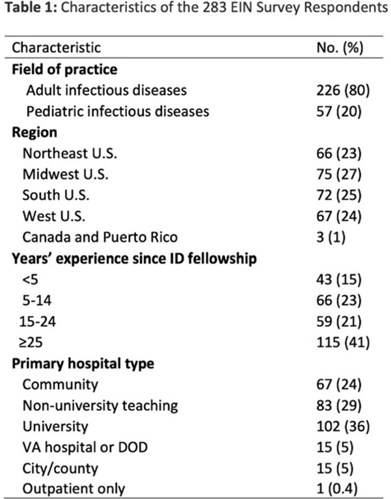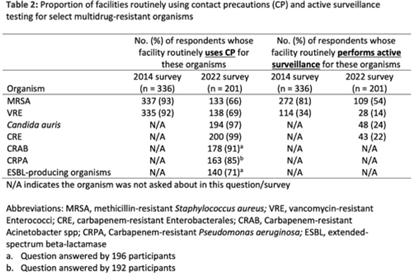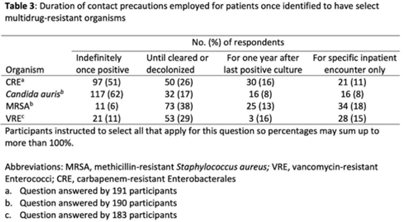526 results
P.057 Achievement of minimal symptom expression in acetylcholine receptor antibody-positive participants treated with efgartigimod in ADAPT/ADAPT+
-
- Journal:
- Canadian Journal of Neurological Sciences / Volume 51 / Issue s1 / June 2024
- Published online by Cambridge University Press:
- 24 May 2024, p. S31
-
- Article
-
- You have access
- Export citation
A crinoid fauna and a new species of Pycnocrinus from the Martinsburg Formation (Upper Ordovician), lower Hudson Valley, New York
-
- Journal:
- Journal of Paleontology , First View
- Published online by Cambridge University Press:
- 13 May 2024, pp. 1-18
-
- Article
- Export citation
Alcohol milestones and internalizing, externalizing, and executive function: longitudinal and polygenic score associations
-
- Journal:
- Psychological Medicine , First View
- Published online by Cambridge University Press:
- 09 May 2024, pp. 1-14
-
- Article
-
- You have access
- Open access
- HTML
- Export citation
Separating the rash from the chaff: novel clinical decision support deployed during the mpox outbreak
-
- Journal:
- Infection Control & Hospital Epidemiology , First View
- Published online by Cambridge University Press:
- 02 April 2024, pp. 1-3
-
- Article
-
- You have access
- Open access
- HTML
- Export citation
The Crystal Structure of Bannisterite
-
- Journal:
- Clays and Clay Minerals / Volume 40 / Issue 2 / April 1992
- Published online by Cambridge University Press:
- 28 February 2024, pp. 129-144
-
- Article
- Export citation
Implementation of contact precautions for multidrug-resistant organisms in the post–COVID-19 pandemic era: An updated national Emerging Infections Network (EIN) survey
-
- Journal:
- Infection Control & Hospital Epidemiology / Volume 45 / Issue 6 / June 2024
- Published online by Cambridge University Press:
- 14 February 2024, pp. 703-708
- Print publication:
- June 2024
-
- Article
-
- You have access
- Open access
- HTML
- Export citation
Peer review of clinical and translational research manuscripts: Perspectives from statistical collaborators
-
- Journal:
- Journal of Clinical and Translational Science / Volume 8 / Issue 1 / 2024
- Published online by Cambridge University Press:
- 04 January 2024, e20
-
- Article
-
- You have access
- Open access
- HTML
- Export citation
28 Traumatic Brain Injury and Genetic Risk for Alzheimer's Disease Influence ß-Amyloid Levels
-
- Journal:
- Journal of the International Neuropsychological Society / Volume 29 / Issue s1 / November 2023
- Published online by Cambridge University Press:
- 21 December 2023, pp. 238-239
-
- Article
-
- You have access
- Export citation
4 Urinary Fluoride Levels and Metal Co-Exposures Among Pregnant Women in Los Angeles, California
-
- Journal:
- Journal of the International Neuropsychological Society / Volume 29 / Issue s1 / November 2023
- Published online by Cambridge University Press:
- 21 December 2023, pp. 867-868
-
- Article
-
- You have access
- Export citation
Age and beliefs about vaccines associated with COVID-19 vaccination among US Veterans
-
- Journal:
- Antimicrobial Stewardship & Healthcare Epidemiology / Volume 3 / Issue 1 / 2023
- Published online by Cambridge University Press:
- 23 October 2023, e184
-
- Article
-
- You have access
- Open access
- HTML
- Export citation
Use of contact precautions for multidrug-resistant organisms and the impact of the COVID-19 pandemic: An Emerging Infections Network (EIN) survey
-
- Journal:
- Antimicrobial Stewardship & Healthcare Epidemiology / Volume 3 / Issue S2 / June 2023
- Published online by Cambridge University Press:
- 29 September 2023, pp. s102-s103
-
- Article
-
- You have access
- Open access
- Export citation
Effect of an initial specimen diversion device on blood-culture contamination rates and vancomycin usage: A quasi-experimental study
-
- Journal:
- Infection Control & Hospital Epidemiology / Volume 45 / Issue 1 / January 2024
- Published online by Cambridge University Press:
- 03 August 2023, pp. 100-102
- Print publication:
- January 2024
-
- Article
-
- You have access
- Open access
- HTML
- Export citation
17 - Practical Calculations Involving Two-Component Fermions
- from Part IV - Sample Calculations in the Standard Model and Its Supersymmetric Extension
-
- Book:
- From Spinors to Supersymmetry
- Published online:
- 06 July 2023
- Print publication:
- 08 June 2023, pp 667-681
-
- Chapter
- Export citation
C - Appendix C Behavior of Fermion Bilinears under P, T, C
- from Part V - The Appendices
-
- Book:
- From Spinors to Supersymmetry
- Published online:
- 06 July 2023
- Print publication:
- 08 June 2023, pp 819-824
-
- Chapter
- Export citation
5 - Anomalies
- from Part I - Spin-1/2 Fermions in Quantum Field Theory, the Standard Model, and Beyond
-
- Book:
- From Spinors to Supersymmetry
- Published online:
- 06 July 2023
- Print publication:
- 08 June 2023, pp 229-258
-
- Chapter
- Export citation
Preface
-
- Book:
- From Spinors to Supersymmetry
- Published online:
- 06 July 2023
- Print publication:
- 08 June 2023, pp xiii-xvi
-
- Chapter
- Export citation
J - Appendix J MSSM and RPV Fermion Interaction Vertices
- from Part V - The Appendices
-
- Book:
- From Spinors to Supersymmetry
- Published online:
- 06 July 2023
- Print publication:
- 08 June 2023, pp 952-967
-
- Chapter
- Export citation
4 - Gauge Theories and the Standard Model
- from Part I - Spin-1/2 Fermions in Quantum Field Theory, the Standard Model, and Beyond
-
- Book:
- From Spinors to Supersymmetry
- Published online:
- 06 July 2023
- Print publication:
- 08 June 2023, pp 191-228
-
- Chapter
- Export citation
E - Appendix E The Spin-1/2 and Spin-1 Wave Functions
- from Part V - The Appendices
-
- Book:
- From Spinors to Supersymmetry
- Published online:
- 06 July 2023
- Print publication:
- 08 June 2023, pp 842-872
-
- Chapter
- Export citation
Acknowledgments
-
- Book:
- From Spinors to Supersymmetry
- Published online:
- 06 July 2023
- Print publication:
- 08 June 2023, pp xvii-xviii
-
- Chapter
- Export citation




